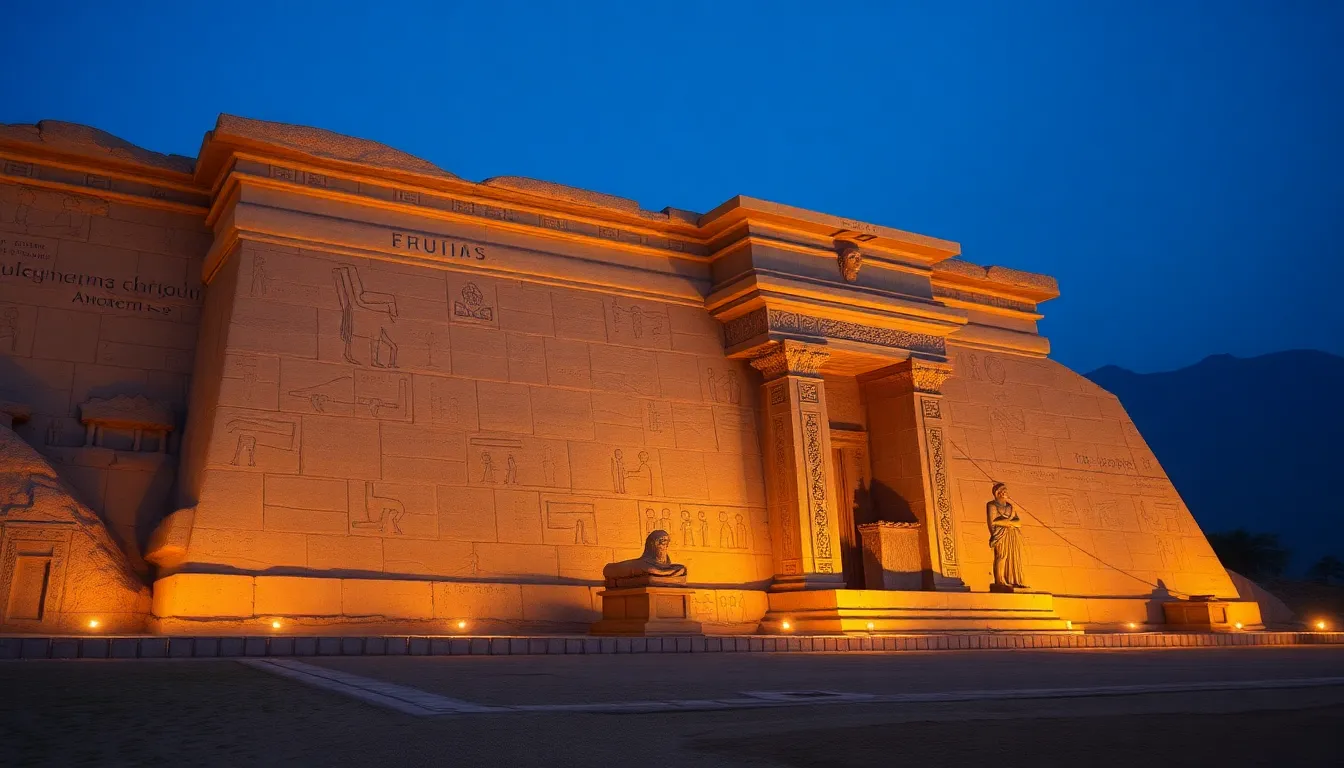The Afterlife and the Soul: Insights from Tomb Texts
Introduction to Afterlife Beliefs
The concept of the afterlife is a profound and universal theme found in many cultures throughout history. From the grand pyramids of Egypt to the intricate burial mounds of Mesopotamia, societies have long sought to understand what lies beyond death. These beliefs are not only reflections of cultural values but also provide insights into human existence and our quest for meaning.
Understanding the soul’s journey and its fate after death has been pivotal in shaping religious practices, moral codes, and societal structures. In ancient civilizations, the afterlife was often seen as a continuation of life, where the soul would journey to a realm that mirrored the earthly experience, albeit with divine judgment and spiritual significance.
Historical Context of Tomb Texts
Tomb texts, or funerary inscriptions, served as vital components of burial practices in ancient societies. These texts were inscribed on tomb walls, sarcophagi, or papyri, and were intended to guide the deceased in their journey to the afterlife. They often contained prayers, spells, and instructions for navigating the challenges that awaited them.
- Definition: Tomb texts function as both a protective measure and a guide for the soul, ensuring safe passage to the afterlife.
- Purpose: They aimed to provide comfort to the living and facilitate the deceased’s resurrection.
Key civilizations known for their tomb texts include:
- Ancient Egypt
- Mesopotamia
- China
- The Maya civilization
The Soul in Ancient Beliefs
The concept of the soul holds different meanings across cultures, but it generally refers to the spiritual essence of a person, distinct from the physical body. In many ancient traditions, the soul was believed to be immortal, embarking on a journey after death that reflected the individual’s moral and ethical choices during their earthly life.
Key distinctions include:
- Physical Body: The tangible aspect of a person, which decays after death.
- Spiritual Essence: The eternal part of a person, often thought to travel to another realm.
Key Themes in Tomb Texts
Tomb texts exhibit several recurring themes that reveal the ancient understanding of life after death. The most prominent themes include:
- Judgment: Many cultures believed that souls would face judgment, where their deeds in life would determine their fate in the afterlife.
- Resurrection: The idea that the soul could be reborn or revived was central, especially in Egyptian beliefs.
- Eternal Life: The aspiration for immortality and a continued existence in a paradise-like state was a common goal across various cultures.
The language used in tomb texts is often rich with symbolism, employing imagery such as scales for judgment, gardens for eternal life, and boats for the journey across the waters of the underworld.
Case Studies: Significant Tomb Texts
Among the many tomb texts that have survived, a few stand out for their cultural significance and depth of insight:
- The Egyptian Book of the Dead: This collection of spells and prayers was designed to assist the deceased in navigating the afterlife and facing the god Osiris, who judged the souls of the dead.
- Sumerian Burial Inscriptions: These texts often included instructions for the deceased and offerings meant to appease the gods and ensure a safe passage.
These texts unveil the hopes and fears of ancient peoples, illustrating their views on morality, the afterlife, and the divine.
Rituals and Practices Surrounding Death
Funerary practices linked to tomb texts were essential in ancient cultures, designed to honor the dead and ensure their safe passage to the afterlife. Common rituals included:
- Embalming: The preservation of the body was crucial in Egyptian culture, allowing the soul to recognize its body in the afterlife.
- Offerings: Food, drinks, and goods were placed in tombs to sustain the deceased in their new existence.
- Funeral Rites: Ceremonies led by priests aimed to invoke blessings for the deceased, often involving elaborate rituals and chants.
These practices were believed to facilitate a smooth transition for the soul, reflecting the culture’s respect for the cycle of life and death.
Comparative Analysis of Afterlife Concepts
When comparing afterlife beliefs as portrayed in tomb texts across different cultures, several similarities and differences emerge. For instance:
- Judgment: Most cultures depicted a form of judgment, though the deities and the criteria varied widely.
- Resurrection: The Egyptians emphasized resurrection through the body, while other cultures may have focused solely on the soul’s journey.
- Paradise vs. Punishment: While some cultures envisioned a paradise for the virtuous, others included concepts of punishment for the wicked.
These beliefs often mirrored societal values, addressing existential questions about morality, justice, and the purpose of life.
Conclusion: The Legacy of Tomb Texts on Modern Understandings of the Soul
The beliefs surrounding the afterlife and the soul have left a lasting legacy that continues to influence modern spirituality and philosophy. Tomb texts serve as a window into the minds of ancient peoples, reflecting their hopes, fears, and understanding of existence.
Today, these ancient texts remain relevant as we explore our own beliefs about death and the afterlife, inviting us to consider our place in the universe and the potential for life beyond this world. As the quest for understanding the soul continues, the insights gleaned from tomb texts remain an invaluable resource in spiritual discourse.




